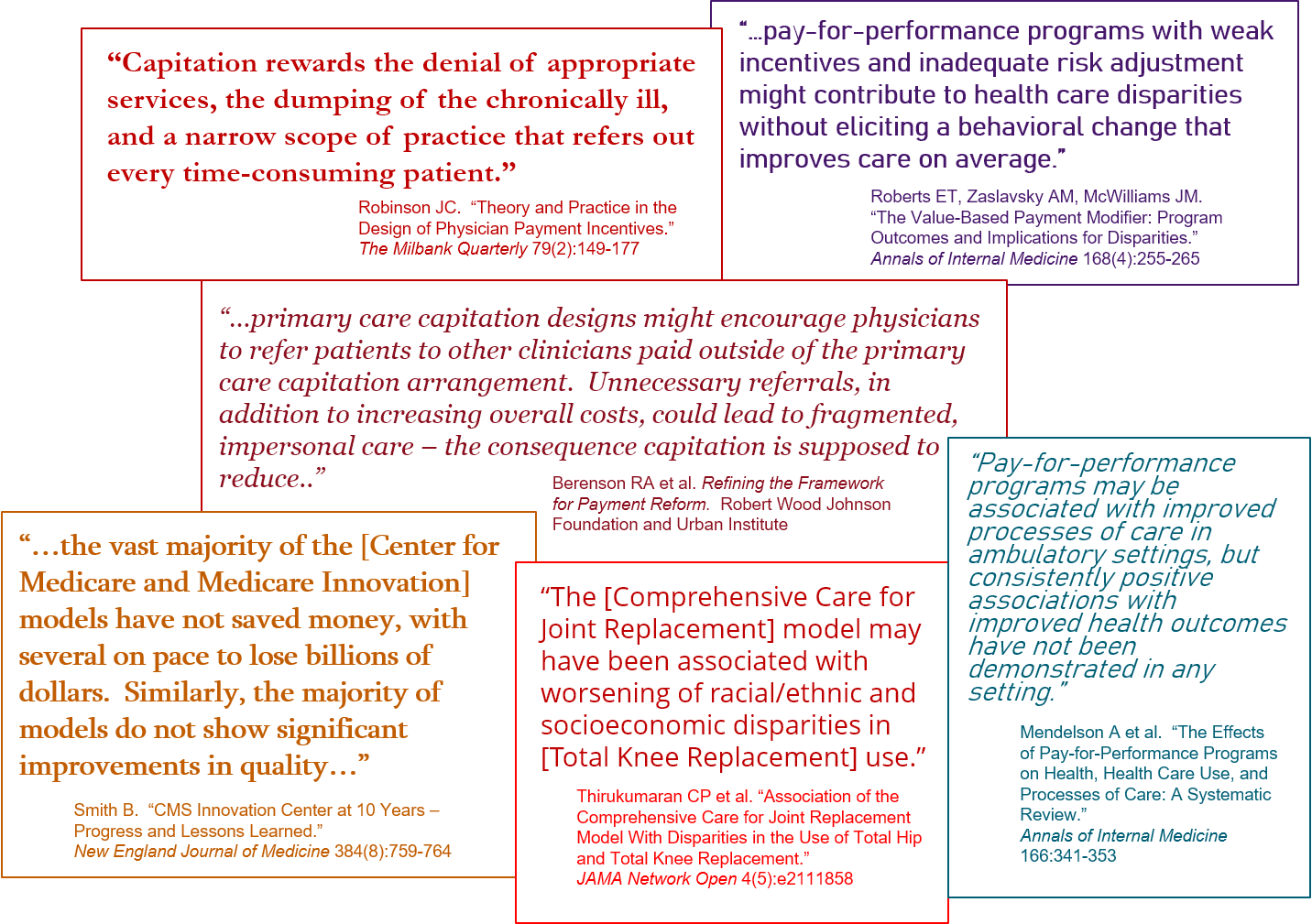Patient-Centered Payment
Which physician would you want to take care of you?
- Physician A makes less money if they keep you healthy
- Physician B makes more money if they provide less treatment than you need
- Physician C gets paid whether they address your health problems or not
- Physician D is paid adequately to address your needs, and makes more money if your health improves

The obvious answer is Physician D. Unfortunately, the healthcare payment systems currently used by Medicare and health insurance plans force doctors to be like Physicians A, B, or C:
- Fee-for-Service Payment. Under current fee-for-service payment systems, doctors are only paid when they examine a patient or perform a procedure. There is no payment at all for many services that help patients stay healthy and reduce the cost of healthcare. As a result, physicians (and hospitals) lose money when they improve their patients’ health.
- Shared Savings/Downside Risk. In the “shared savings” programs created by Medicare and many health insurance plans, physicians receive bonuses if healthcare spending on their patients decreases, even if savings result from withholding services patients need. Programs with “downside risk” penalize physicians when their patients need additional or more expensive services.
- Capitation/Population-Based Payment. In “population-based” and capitation payment systems, physicians receive a fixed amount of money for each patient, regardless of whether the patient’s needs are adequately addressed or not.
None of these systems ensures that a patient receives high-quality care. Under “pay-for-performance” programs tied to quality measures, a physician is still paid the same amount regardless of whether the individual patient received quality care or not, and there are no quality measures at all for many types of health problems.
Is there a better way?
Fortunately, there is: Patient-Centered Payment
In a Patient-Centered Payment system, physicians, hospitals, and other healthcare providers:
- are paid adequately for delivering the services that each individual patient needs; and
- must deliver high-quality care to a patient in order to be paid for service to that patient.
In contrast to current fee-for-service, shared savings, and population-based payment systems, physicians in a Patient-Centered Payment system are not penalized for keeping patients healthy or for delivering services patients need, nor are they rewarded for stinting on healthcare services. Instead, physicians are rewarded for delivering appropriate, high-quality care to their patients. Moreover, Patient-Centered Payment can be implemented easily by payers and providers without the kinds of heavy administrative burdens in current value-based payment systems.